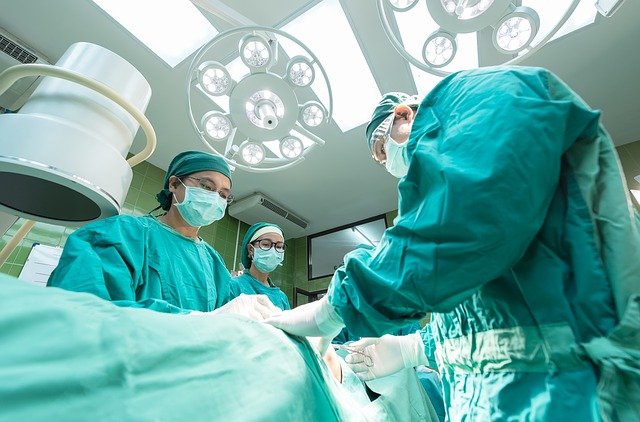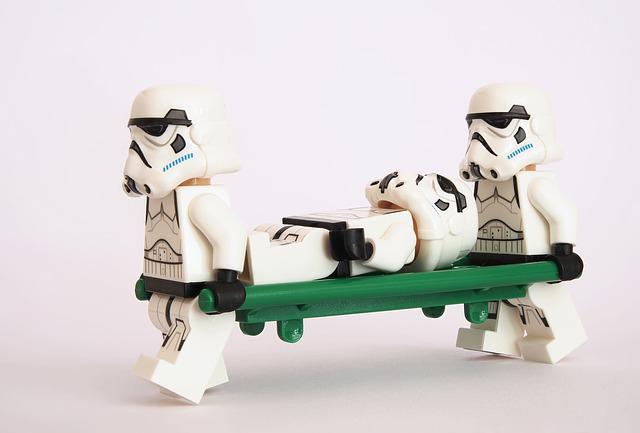
Investing money in children's hospital researchers is important because it reduces costs for treating disease. Pediatric research can also be a great investment. Research on childhood diseases could also be a source of new medicines and treatments. The Children's Miracle Network, a non-profit organization dedicated to improving the health of children, helps accelerate the development of breakthrough therapies and treatments.
Research centers in children's hospitals are crucial for advancing medical research and developing new treatments. Children's Hospital Oakland Research Institute, one of the most prestigious pediatric research centers in America, is supported by many funding sources. It is the only independent pediatric hospital in Bay Area. It is nationally recognized for its medical research and has developed several pediatric subspecialties.

Children's Hospital Oakland hosts the Pediatric Residency, which has provided training for more than 1,000 pediatricians. It also has a strong clinical research program, and the resident physicians' union is fighting for a new contract. Children's Hospital Oakland's research aims to change the way children are treated. Its research team has excellent links with the academic community surrounding the hospital.
The Jan and Dan Duncan Neurological Research Institute was established to advance scientific knowledge about neurological disorders in children. It is a joint research effort between the hospital and the Baylor College of Medicine. It was opened in December 2010. The center is committed to improving the lives and scientific understandings of neurological disorders. The lab includes a Leica Microsystems Gated Stimulation Emission Decletion (GSTE) microscope and molecular analyses.
Children's Hospital Oakland Research Institute (CHIRO) is a nationally renowned pediatric medical center. Its research team is committed in changing how children are treated. The research group has more than 200 scientists who are currently involved in over 150 clinical trials. Children's Hospital Oakland houses a Children's Miracle Network, a non-profit organization that accelerates the development and delivery of new therapies. It also supports Children's Allergy and Asthma Education Center.
The Children's Specialized Hospital Research Center Internship Program provides advanced research training to undergraduate and graduate students. The Center for Clinical and Translational Research has the infrastructure to conduct clinical research. The Clinical Trials Center (CRC), located on Children's Hospital's main Campus, organizes hospital-based researchers and community physicians to develop new treatments. CRC's Scientific Advisory Committee meets monthly to approve studies. Institutional Review Boards (IRBs) must also approve studies at Baylor College of Medicine.

Children's Hospital Oakland Research Center belongs to the Children's Miracle Network. The Children's Miracle Network is dedicated primarily to improving the health of children as well as reducing their costs. It has been awarded more than $80 million in research funding in the past three years.
FAQ
What role do I play in public health?
Participation in prevention programs can help you and others protect their health. Reporting injuries or illnesses to the health professionals can help improve public health and prevent future problems.
How can I become a creative professional in the field of health?
There are many ways to be a creative health professional. Some people start out as students, while others begin their careers working in other fields such as business or engineering.
Some individuals choose to learn a course about a specific topic. Some choose to elective courses that examine different perspectives on health or health care.
No matter what pathway you choose, there are many ways to learn about topics in health and healthcare. These include readings, group discussions and assignments as well lectures. You might also be able to attend workshops, conferences and seminars.
When you complete the program, your knowledge will give you the skills to work with clients, colleagues, and patients in any role within the health system.
You might even get a doctorate.
What are the best ways to get free insurance for my health?
You may be eligible to apply for health insurance free of charge if you are. You might be eligible if you qualify for Medicaid, Medicare and CHIP.
What's the difference between a doctor, and a physician?
A doctor is someone who has completed their training and are licensed to practice medicine. A physician is a specialist in one type of medicine.
What is a health care system?
The health system encompasses all aspects of care from prevention to rehabilitation and everything between. It includes hospitals, clinics, pharmacies, community services, public health, primary health care, long-term care, home care, mental health and addictions, palliative and end-of-life care, emergency medicine, research, education, financing, and regulation.
Complex adaptive systems make up the health system. They exhibit emergent properties that can't always be predicted just by looking at the individual components.
Health systems are complex and difficult to understand. This is where creativity steps in.
Creativity can help us solve problems that we don’t have the answers to. We can use our imagination to think of new ways to improve and create new ideas.
People who think creatively are essential for health systems because they are always changing.
Thinkers who are creative can change the way the health system works for the better.
Statistics
- About 14 percent of Americans have chronic kidney disease. (rasmussen.edu)
- Foreign investment in hospitals—up to 70% ownership- has been encouraged as an incentive for privatization. (en.wikipedia.org)
- The healthcare sector is one of the largest and most complex in the U.S. economy, accounting for 18% of gross domestic product (GDP) in 2020.1 (investopedia.com)
- Consuming over 10 percent of [3] (en.wikipedia.org)
- For instance, Chinese hospital charges tend toward 50% for drugs, another major percentage for equipment, and a small percentage for healthcare professional fees. (en.wikipedia.org)
External Links
How To
What are the 4 Health Systems?
Healthcare systems are complex networks of institutions such as hospitals and clinics, pharmaceutical companies or insurance providers, government agencies and public health officials.
This project had the overall goal to create an infographic to explain the US's health care system to anyone who wanted it.
Here are some key points.
-
The annual healthcare expenditure is $2 trillion. This represents 17% the GDP. It's nearly twice the size as the entire defense budget.
-
In 2015, medical inflation reached 6.6%, which is higher than any other consumer category.
-
Americans spend 9% of their income annually on health.
-
As of 2014 there were more than 300,000,000 Americans who weren't insured.
-
The Affordable Care Act (ACA) has been signed into law, but it isn't been fully implemented yet. There are still large gaps in coverage.
-
The majority of Americans think that the ACA needs to be improved.
-
The US spends a lot more money on healthcare than any other countries in the world.
-
Affordable healthcare would lower the overall cost by $2.8 Trillion annually if everyone had it.
-
Medicare, Medicaid, and private insurers cover 56% of all healthcare spending.
-
There are three main reasons people don't get insurance: not being able or able to pay it ($25 billion), not having the time ($16.4 billion) and not knowing about it ($14.7 trillion).
-
HMO (health management organization) and PPO(preferred provider organisation) are the two types of plans.
-
Private insurance covers most services, including doctors, dentists, prescriptions, physical therapy, etc.
-
The public programs cover outpatient surgery as well as hospitalizations, nursing homes, long term care, hospice, and preventive health care.
-
Medicare is a federal program providing senior citizens health coverage. It covers hospital stays, skilled nursing facilities stays, and home care visits.
-
Medicaid is a joint state-federal program that provides financial assistance to low-income individuals and families who make too much to qualify for other benefits.